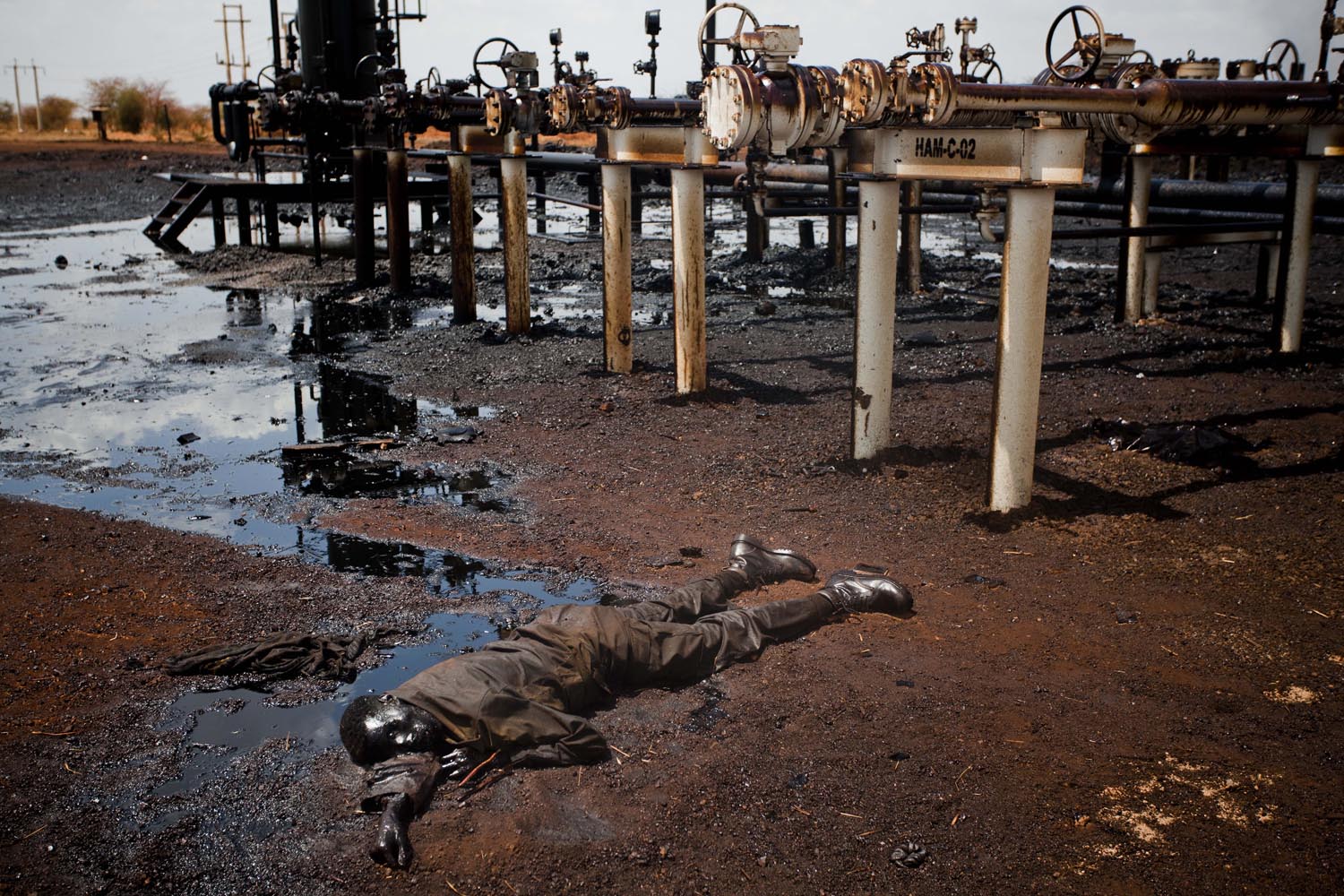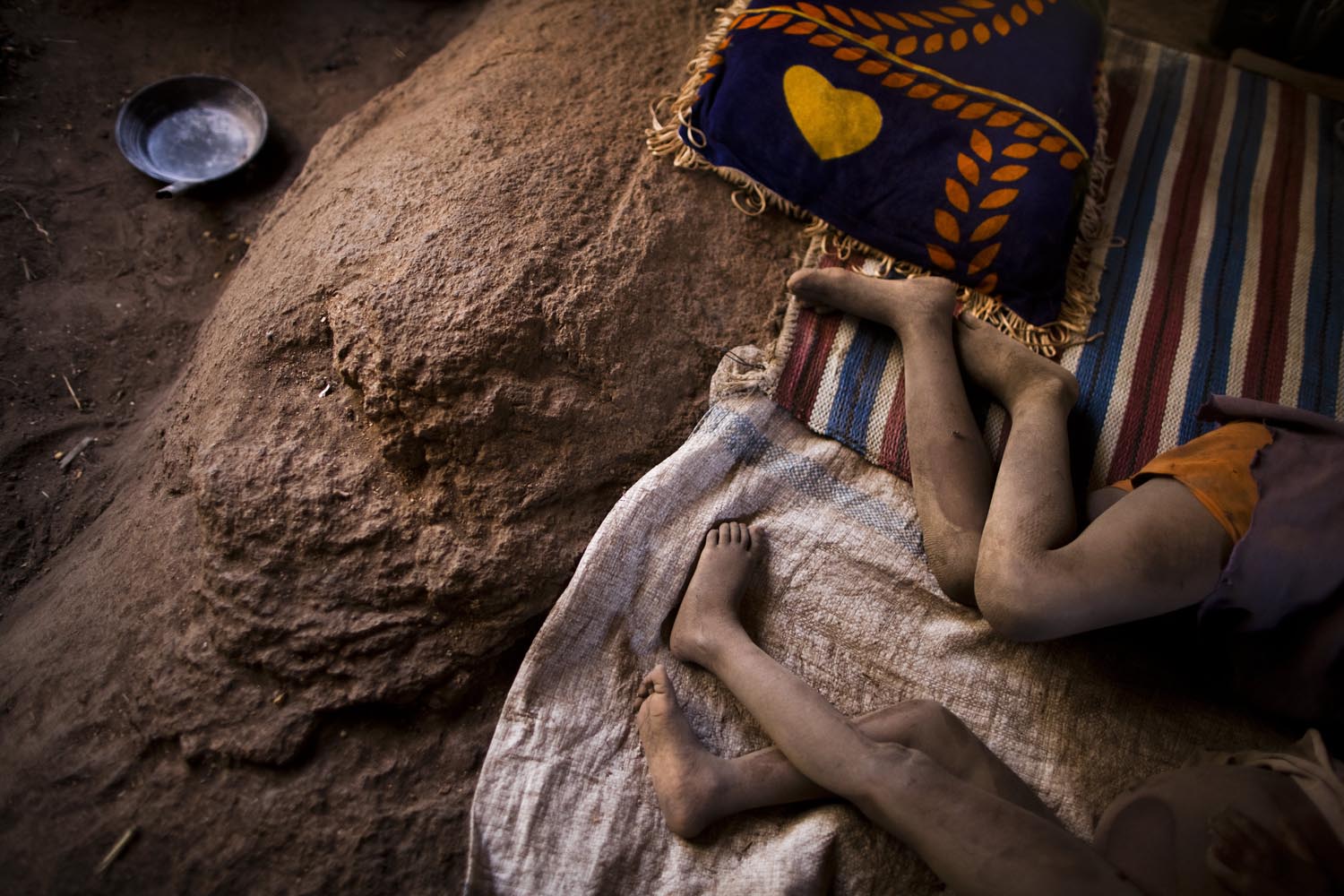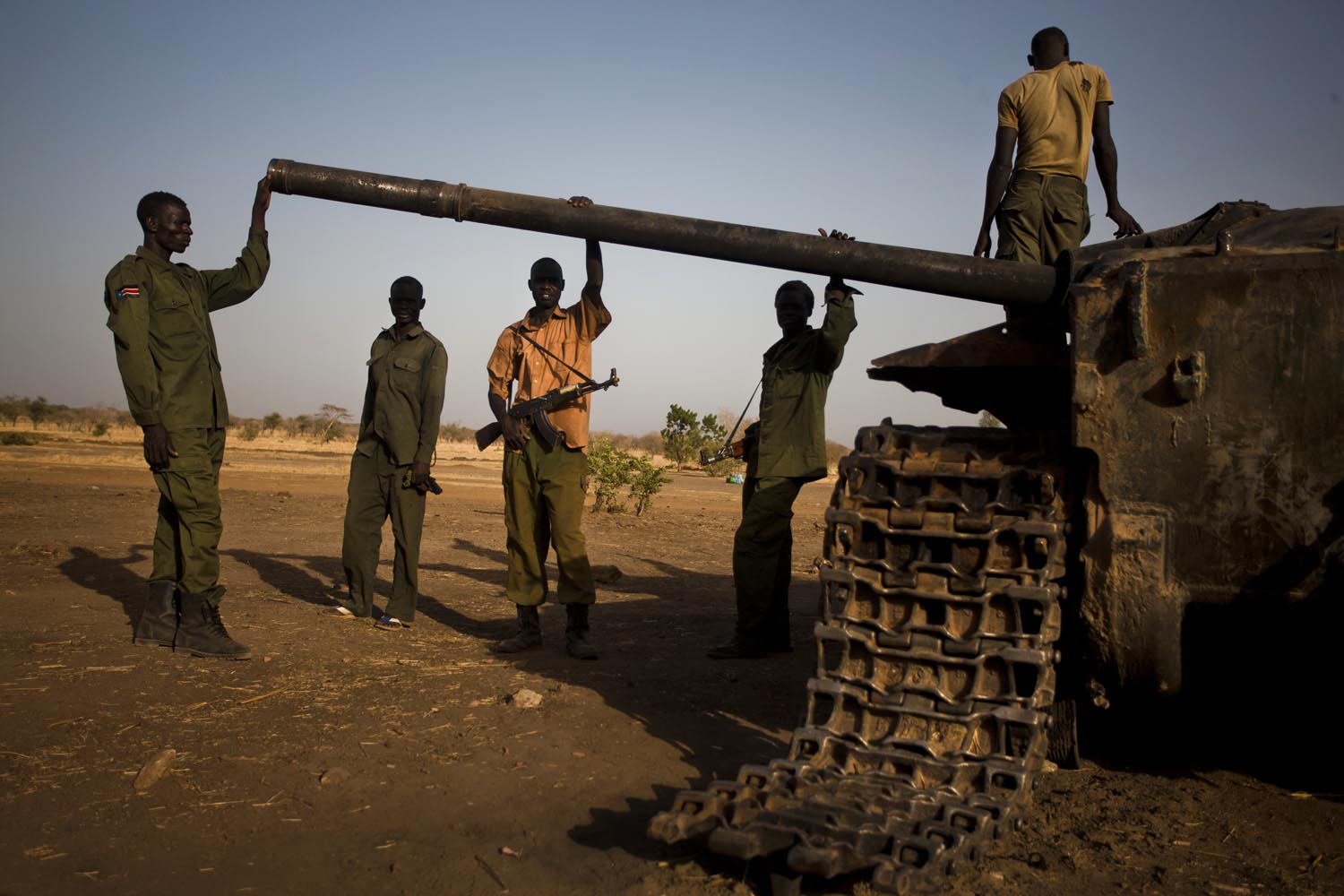
In just over a week, the volatile components behind Sudan’s division into two nations — oil, religion, ethnic rivalry, guerrilla militias, disputed borders — have burst into war. TIME photographer Dominic Nahr has been on assignment in South Sudan’s ironically named Unity State, whose northern edge includes disputed boundaries with its enemy Sudan — one of which is marked only by a white cargo container. In the last nine days, South Sudan forces have pushed north into Sudanese territory, taking the disputed town of Heglig, only to pull back under fire and see enemy soldiers press south instead. Nahr filed this dispatch on Sunday.
Unity State is one of the most frustrating places I have worked. Nothing comes easy. You have to struggle, then struggle some more to get things moving. It took me days to find a truck to hire in the state capital Bentiu in order to get to the conflict areas only to have to it taken away by a local official who allegedly wanted it to tow a bus back from the front lines. A couple of days later a dreadlocked rebel soldier from Darfur–which lies far across the border in Sudan–became angry that I and a companion had taken his photo and chased us down in his Mad Max car, jumping out and cocking his gun with such fury I thought it was going to fly right out of his hands. He then sped off with two cameras.
No one seems to know what’s going on and when I try to reach the front lines I mostly get stalled or put-off by soldiers, commanders and officials. In the end I hitched a ride with southern soldiers to Heglig, a disputed town that South Sudan occupied for a few days. They were less concerned with the fighting than they were with filling the pick-up truck with looted beds, mattresses, laptops and printers from the town. On another drive the hood of our truck, which was held on with rope, flipped up and smashed the windscreen as we flew down a rutted dirt road.
In Heglig, days before it was retaken by the northern army, I wandered over to the nearby oil installations hoping to capture photos of the destruction. There were bodies of dead northern soldiers all over the place. As I got closer to the pipeline I saw a corpse lying in a thick slick of oil, glistening in the sun. The soldier’s head was resting on his arms and I couldn’t see any injuries: it looked like he was sleeping. It really hit me, this moment of calm amidst the chaos, and I knew this was the photograph that captured both the causes and the consequences of the fighting over Heglig.
But it hasn’t all been difficulty and horror.
My current desktop picture is a group photo, including TIME Africa bureau chief Alex Perry and some of my other colleagues, over the border in the Nuba Mountains, where rebel forces are being assaulted by Sudan government based in the north’s capital, Khartoum. We are dirty but happy, leaning on the 4×4 that took us around for a week. It’s still smeared with some of the mud that they use to camouflage vehicles against bombing raids by northern Antonovs.
The reason I was so happy is because the Nubans are as inviting as their mountains that spring from the ground giving refuge and protection. The feeling of a struggle shared by Nuban civilians and rebels alike is innocent and pure. With almost no outside support they have learned to rely on themselves.
The struggle is both genuine and urgent and this is part of the reason I will return and will continue working there. People are starving because the fear of aerial bombardment means they have not planted any food in months. They have already missed two harvests and the bombing is still going on.
I can’t say how this will end. The rainy season will be upon us within weeks washing away the mud roads and blocking off all land access, in and out. A 15-minute downpour a few days ago was enough to turn the dirt roads slick leaving snakelike tracks where cars had slid around.
The only thing I am sure about is that this is not over; it hasn’t been for decades.
Dominic Nahr, a TIME contract photographer, is represented by Magnum.









More Must-Reads from TIME
- Cybersecurity Experts Are Sounding the Alarm on DOGE
- Meet the 2025 Women of the Year
- The Harsh Truth About Disability Inclusion
- Why Do More Young Adults Have Cancer?
- Colman Domingo Leads With Radical Love
- How to Get Better at Doing Things Alone
- Michelle Zauner Stares Down the Darkness
Contact us at letters@time.com